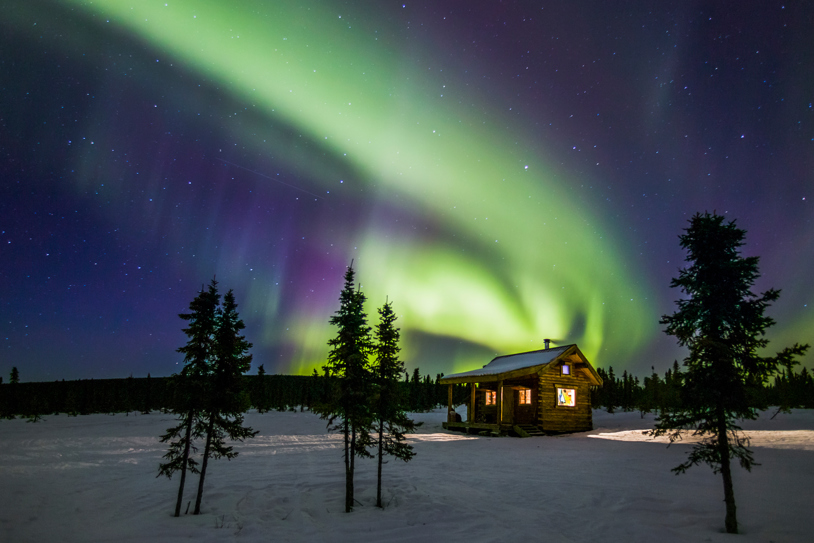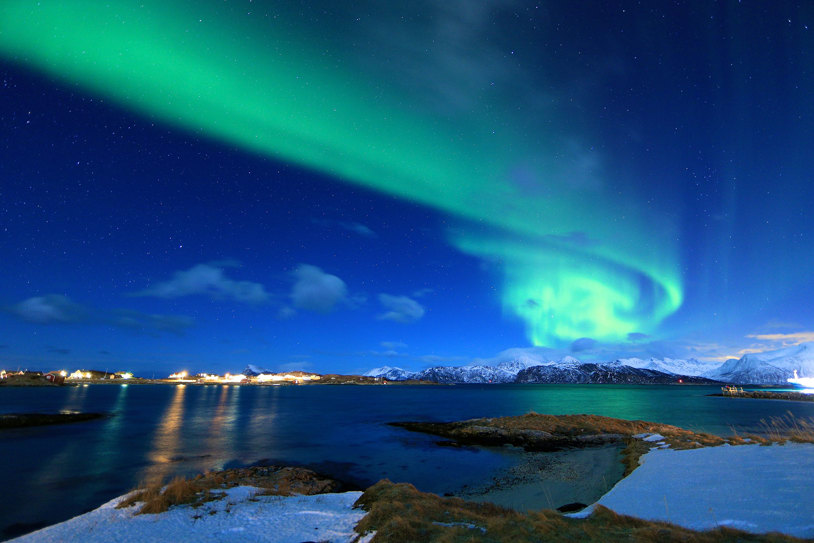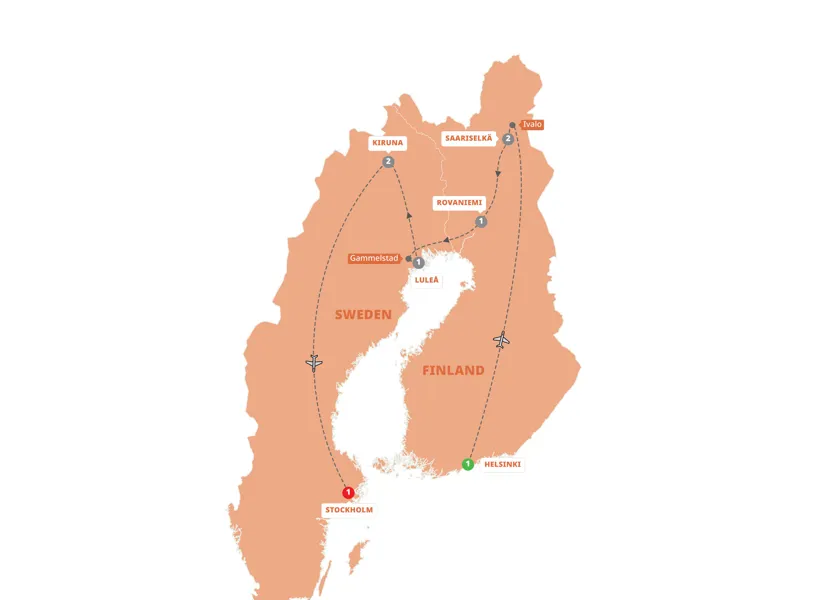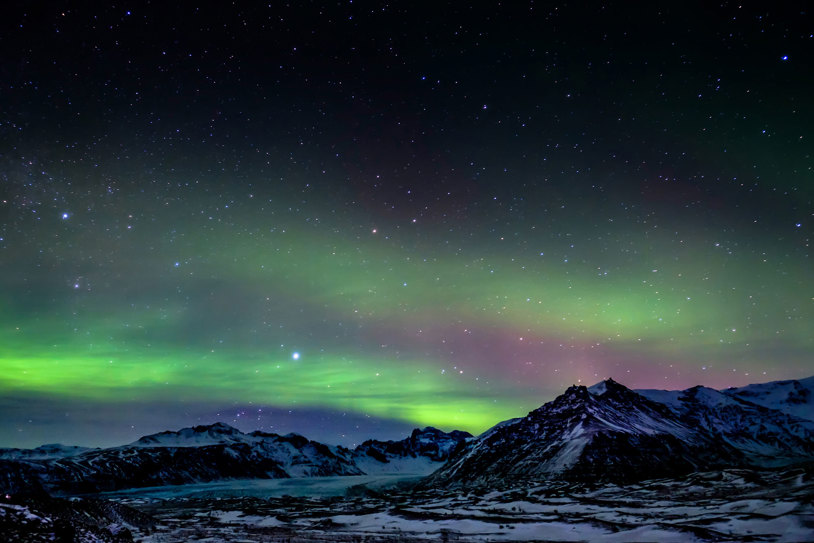Best Time and Top Destinations
to Visit the Arctic Circle
to Visit the Arctic Circle

Why 2026 is the Best Year for an Arctic Circle Adventure
The Arctic Circle is one of the world’s most extraordinary travel destinations, and 2026 offers exceptional conditions for experiencing it at its best. Scientists predict a peak in solar activity, which means brighter, more frequent, and more colorful Northern Lights. With accurate aurora forecasts now available, travelers can plan with greater confidence and maximize their chances of seeing this awe-inspiring natural wonder.
Beyond the auroras, visiting the Arctic Circle engages all the senses. Crisp winter air, snow-covered landscapes, and the quiet of Arctic nights create an unforgettable atmosphere. This is a place where stillness enhances appreciation for the beauty and power of nature.
Best Places to See the Northern Lights in the Arctic Circle
The Arctic Circle spans several countries, each offering remarkable opportunities for Northern Lights viewing alongside rich cultural and natural experiences.
- Norway – Famous for its dramatic fjords, historic coastal towns, and vast skies ideal for aurora viewing.
- Finland – Home to pristine wilderness and traditions of the Indigenous Sámi people.
- Iceland – A landscape of contrasts, where geothermal steam rises beside frozen waterfalls.
- Alaska – Expansive wilderness with snow-clad mountains and crystal-clear night skies.
Each location offers unique vantage points for the auroras, along with opportunities to connect with local heritage and enjoy winter scenery that is as beautiful by day as it is by night. Here's why each of them is a top destination for chasing the Northern Lights:
Norway
Norway is renowned for its dramatic fjords, historic coastal towns, and vast skies that make it one of the best places in the world for Northern Lights viewing. Locations above the Arctic Circle, such as Tromsø and the Lofoten Islands, offer dark winter skies framed by snow-covered mountains and shimmering waters. Visitors can also explore the country’s maritime heritage and unique winter traditions that enrich the aurora experience.
Finland
Finland’s far north is a pristine wilderness where the auroras frequently illuminate frozen forests and glassy lakes. The region is also home to the Indigenous Sámi people, whose cultural traditions include reindeer herding, handicrafts, and storytelling that have been passed down for generations. Watching the lights here often feels like stepping into a serene, timeless landscape.
Iceland
Iceland offers an unforgettable mix of volcanic and glacial landscapes that serve as striking backdrops for the Northern Lights. Here, visitors might see auroras dancing above black sand beaches dusted with snow or glowing through clouds of geothermal steam. Frozen waterfalls, ice caves, and the country’s distinctive coastal scenery make each night’s viewing uniquely photogenic.
Alaska
In Alaska, the expansive wilderness stretches from snow-covered mountain ranges to frozen rivers that glisten under the moonlight. Towns such as Fairbanks are well-known for their high aurora visibility, with dark skies and minimal light pollution. Alaska also offers a strong sense of frontier history, blending rugged natural beauty with cultural traditions rooted in life in the far north.
Experience Arctic Culture and Winter Traditions
Life above the Arctic Circle is defined by centuries of adaptation to some of the most extreme conditions on Earth. This is a region where communities have learned not only to survive but to thrive in long winters, short summers, and challenging terrain. Traveling here offers a rare chance to see how these traditions have shaped daily life and continue to influence art, food, and community values today. For many visitors, the cultural dimension becomes as memorable as the landscapes themselves.
In Northern Europe, the Indigenous Sámi people have preserved customs that are deeply tied to the land and the seasons. Reindeer herding remains central to their way of life, both as a livelihood and as a cultural symbol. Traditional dress, often adorned with bright colors and intricate patterns, tells stories of heritage and identity. Sámi artisans are known for producing finely crafted items such as knives, leather goods, and woven bands, each made using techniques passed down through generations. Music and storytelling also play a vital role, sharing knowledge and legends that connect the present to the past.
Across the Atlantic, in Alaska and Iceland, fishing communities have built their lives around the bounty of the sea. These coastal towns are living examples of how maritime practices, such as boat building, fish preservation, and navigation skills, have sustained families for centuries. In winter, harbors may be lined with fishing vessels preparing for the next journey, while smokehouses release the aroma of cured fish. Gatherings often celebrate the ocean’s importance, reinforcing the community’s bond to the water.
Travelers who take the time to engage with these traditions often find that they gain a deeper appreciation for the resilience, creativity, and hospitality of Arctic peoples. Meeting local artisans, visiting heritage museums, and participating in seasonal activities provide authentic insight into a way of life that few outsiders experience. These encounters transform an Arctic journey from a scenic escape into a meaningful cultural exploration, adding layers of understanding that last long after the trip ends.
Explore the Arctic’s Most Striking Winter Landscapes
The Arctic Circle’s scenery is among the most spectacular in the world. In winter, it becomes a pristine realm of snow and ice, with light and color that seem otherworldly.
- Alaska – Vast wilderness with mountain peaks and frozen rivers glowing under the moonlight.
- Norway and Finland – Snow-covered fjords and fishing villages framed by icy waters.
- Iceland – Black sand beaches dusted with snow and geothermal steam rising through frozen air.
The low winter sun creates pastel-colored skies, and clear nights offer dazzling views of stars alongside the shimmering auroras. Guided itineraries provide safe and informed access to these remote areas, ensuring travelers can experience the beauty while learning about its ecological and historical significance.
Why a Guided Arctic Circle Tour Enhances the Experience
In 2026, the combination of peak Northern Lights activity, sustainable travel initiatives, and improved access to remote Arctic regions makes it an ideal year to visit. Guided tours offer curated itineraries that highlight the best viewing locations, cultural encounters, and scenic wonders. Travelers can enjoy a balance of adventure and comfort, with every detail planned to make the experience seamless.
A guided journey also supports local communities and protects the fragile Arctic environment through responsible tourism practices. This ensures that both the natural beauty and cultural heritage are preserved for future generations.
FAQs: Northern Lights, Arctic Travel & Tips
From late September to early April, when nights are long and skies are darkest. Peak visibility often occurs during the coldest winter months.
Layered, insulated clothing is essential, along with warm accessories like hats, gloves, and scarves. Waterproof outerwear is highly recommended.
Yes. The structured nature of guided tours makes it easy to explore remote destinations while learning from expert guides.
The Northern Lights occur when charged particles from the Sun, known as solar wind, collide with gases in Earth’s atmosphere. These collisions produce the vivid greens, purples, and reds that dance across Arctic skies.
The auroras are most commonly visible in the auroral oval, which includes northern Norway, Finland, Iceland, Alaska, and Canada.
No. While green is most common, colors vary depending on atmospheric gases. Oxygen can produce red or green light, while nitrogen can create pink, purple, or blue hues.
Clear skies, low light pollution, and high solar activity are essential. Even during peak season, clouds or bright city lights can obscure the view.
Yes, it is perfectly safe. The lights are a visual effect with no harmful impact on people, though strong solar storms may disrupt technology like GPS or radio signals.



















